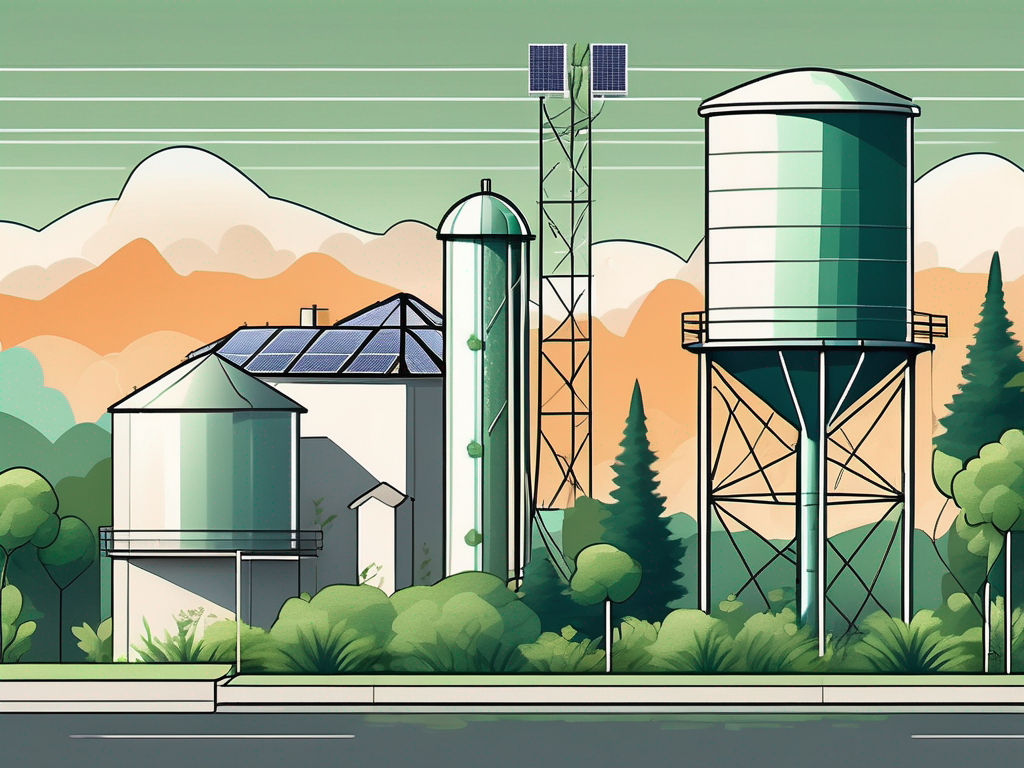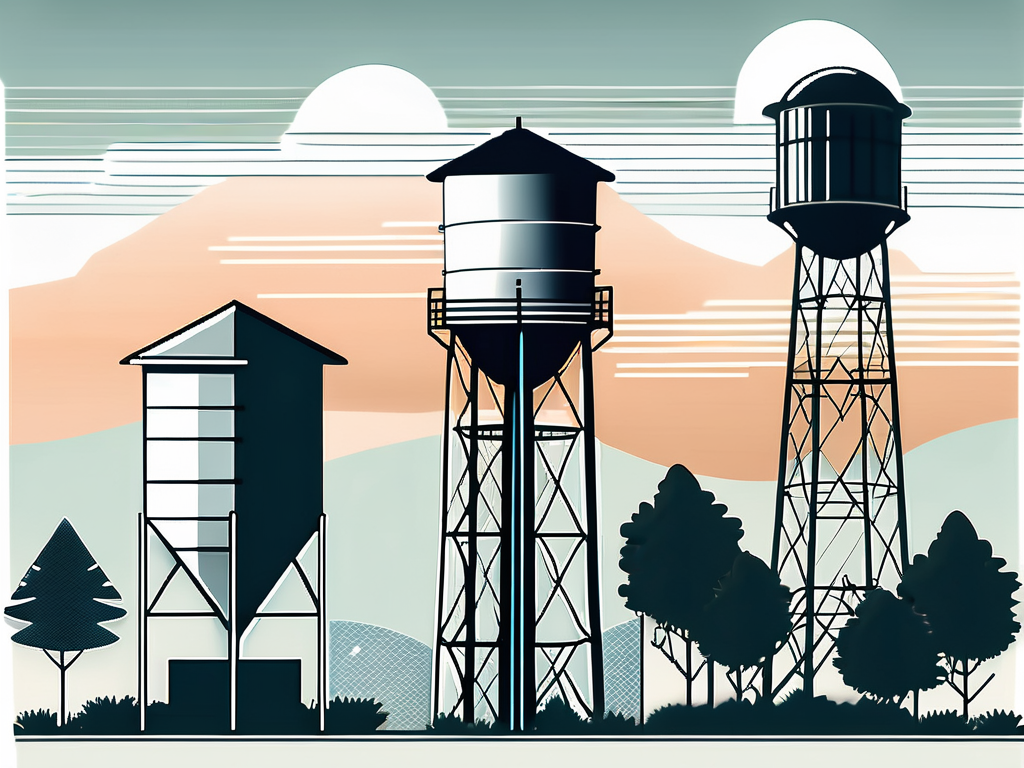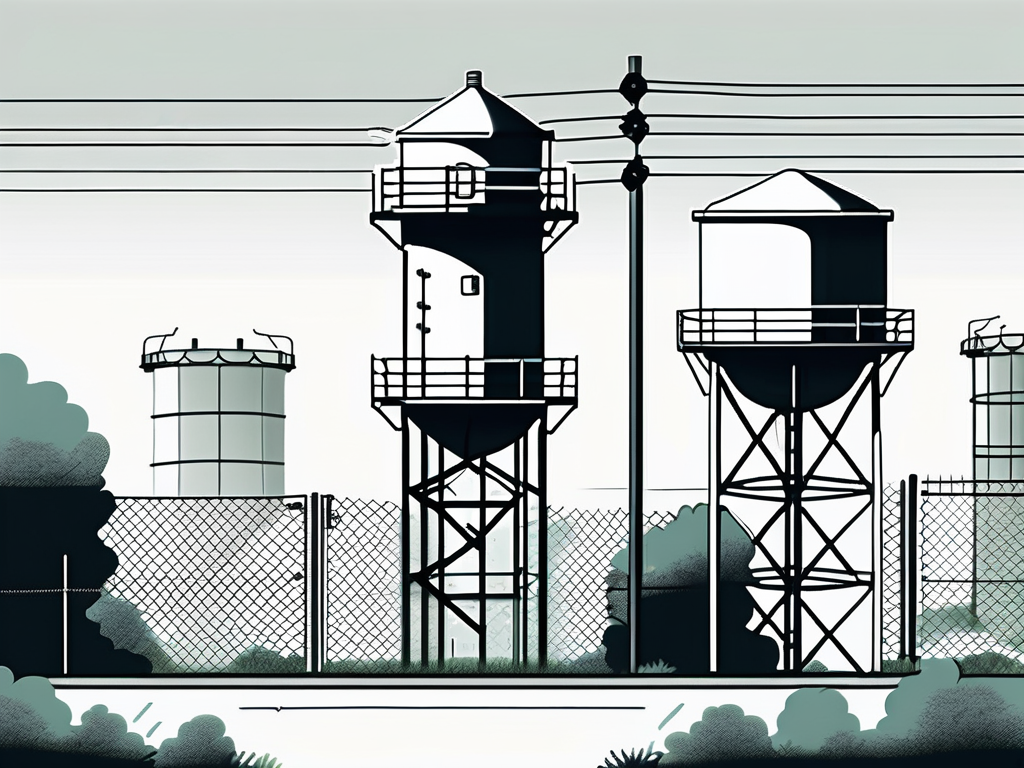
Choosing the Best Water Tower for Home Use: A Comprehensive Guide
Water towers serve a critical function in maintaining a consistent and reliable water supply, especially for homes in rural or semi-urban areas. This comprehensive guide will help you understand the essentials of water towers, the factors to consider when choosing one, the different types available, cost analysis, safety regulations, and the environmental impact associated with them. With this knowledge, you will be well-equipped to make an informed decision.
Understanding the Basics of Water Towers
Water towers are structures designed to store and manage water supply, and they play a vital role in ensuring that homes have adequate water pressure and availability. They are commonly used in various settings, from urban municipalities to rural residences. Understanding their basic functions is crucial for making the right choice for your home.
What is a Water Tower?
A water tower is an elevated structure specifically designed to store water for a community, industrial use, or individual homes. The design generally includes a tank elevated on a platform, allowing gravity to help distribute the water. These towers not only provide a reliable water supply but also help maintain pressure in the water distribution system. The height of the tower is carefully calculated to ensure that water can flow freely to the farthest reaches of the distribution network, making it an essential component of modern infrastructure.
Importance of Water Towers for Home Use
For homes that rely on well water or those situated in areas where municipal supply may be inconsistent, a personal water tower can be extremely beneficial. These structures ensure that water is readily available for cooking, cleaning, and landscaping, reducing dependency on external water sources. Additionally, they can be equipped with filtration systems to improve water quality, making them not only a source of supply but also a means of ensuring safe drinking water for families.
Moreover, having a water tower can help manage peak usage times when demand is highest. This capability results in fewer interruptions and a more stable water supply for home inhabitants. In regions prone to drought or water shortages, a water tower can serve as a critical buffer, allowing homeowners to store excess water during wetter months for use during dry spells. This proactive approach not only conserves water but also promotes sustainable practices within the community, encouraging a more resilient approach to water management.
Furthermore, the aesthetic design of water towers has evolved over the years, with many communities opting for visually appealing structures that blend seamlessly into the landscape. Some water towers are even designed to serve as landmarks, showcasing unique architectural styles or local art that reflect the culture and history of the area. This dual functionality of providing essential services while enhancing community identity makes water towers a fascinating subject of study and appreciation.
Factors to Consider When Choosing a Water Tower
Choosing the appropriate water tower for your home involves several critical factors that must be carefully evaluated. From size to material, each element influences the overall effectiveness and longevity of the installation.
Size and Capacity
The first consideration should be the size and capacity of the water tower. It's essential to assess your household's water needs based on the number of occupants, usage habits, and any additional requirements such as irrigation and landscaping. A water tower that is too small will lead to frequent refilling, while one that is excessively large may result in unnecessary expenditure. Additionally, consider future growth; if you plan to expand your household or increase your landscaping, opting for a slightly larger capacity may save you from needing to upgrade sooner than expected.
Material and Durability
Water towers are constructed from various materials such as steel, fiberglass, or concrete. Each material has its advantages and disadvantages in terms of durability, maintenance, and cost. Steel towers are strong but may require regular maintenance to prevent rust. On the other hand, fiberglass towers are lightweight and resistant to corrosion, providing a longer lifespan with less upkeep. Concrete towers, while robust and long-lasting, can be more expensive and may require additional structural support. It's also important to consider the environmental conditions in your area, as extreme weather can impact the longevity of certain materials.
Installation and Maintenance
The installation process can vary based on the type of water tower, site conditions, and local regulations. It's advisable to consult with professionals who can assess site conditions and provide recommendations for effective installation. After installation, regular maintenance is crucial for ensuring your water tower remains in optimal condition. This includes routine inspections for leaks, checking the structural integrity, and ensuring that the water quality remains safe for consumption. Additionally, understanding the local regulations regarding water tower installations can prevent potential legal issues down the line, as some areas may have specific guidelines on height, placement, and even aesthetic considerations.
Cost Considerations
When budgeting for a water tower, it’s important to factor in not just the initial purchase price but also ongoing costs such as installation, maintenance, and potential repairs. While a cheaper model may seem appealing upfront, it could lead to higher expenses over time due to frequent repairs or replacements. Furthermore, consider the energy costs associated with pumping water from the tower, as more efficient models can save you money in the long run. Researching financing options or grants for water conservation projects may also provide financial relief, making it easier to invest in a quality water tower that meets your needs.
Types of Water Towers for Home Use
When selecting a water tower, it’s essential to understand the different types available in the market. Each type has specific features that may suit your needs.

Elevated Water Towers
Elevated water towers are among the most common types used in residential settings. They typically feature a cylindrical tank perched on a high structure. The elevation allows gravitational force to aid in water distribution, providing excellent pressure and flow rates. These towers can also be aesthetically pleasing, often designed to blend in with the surrounding landscape or even serve as a landmark for the community. Additionally, elevated water towers can help in maintaining a consistent water supply during peak usage times, ensuring that households have access to water even during high-demand periods.
Ground Storage Water Towers
Ground storage towers are situated at ground level and can hold a substantial amount of water. While they may require pumps to distribute water, they often come at a lower cost compared to elevated options. These towers are particularly useful for homes with significant space and minimal elevation differences. Moreover, ground storage tanks can be easier to maintain and inspect, as they are more accessible than elevated structures. Many homeowners opt for these tanks when they want to implement a rainwater harvesting system, as they can be easily integrated into existing plumbing systems to maximize water efficiency.
Standpipe Water Towers
Standpipe water towers feature a tall, cylindrical structure, often used when space is limited. These towers are designed for high-pressure applications and work well in distributing water to various points effectively. They are particularly advantageous in areas where terrain varies significantly, as their design allows for effective water delivery across different elevations. Additionally, standpipe towers can be equipped with monitoring systems that help track water levels and quality, ensuring that homeowners are always informed about their water supply. This feature can be particularly beneficial in regions prone to drought or water shortages, as it allows for better management of available resources.
Cost Analysis of Home Water Towers
Understanding the financial implications of purchasing and maintaining a water tower is essential for budgeting. The overall cost includes the initial purchase price, installation, and long-term maintenance expenses. Additionally, it is crucial to consider the potential impact on property value and insurance premiums, as these factors can further influence the overall financial picture.
Initial Purchase and Installation Costs
The cost of purchasing a water tower varies significantly based on its type, capacity, and material. Elevated towers typically demand a higher upfront investment than ground storage options due to their engineering requirements. Installation costs can also fluctuate depending on site conditions and local labor rates. For instance, if your property has challenging terrain or requires extensive groundwork, the installation costs can escalate quickly. Furthermore, local regulations and permits may add to the initial investment, as compliance with safety and environmental standards is often mandatory.
Long-Term Maintenance Costs
Once installed, ongoing maintenance is necessary to preserve the efficiency and integrity of your water tower. This may include routine inspections, cleaning, and repairs. Factors such as material choice can influence these costs; for instance, fiberglass towers generally require less maintenance compared to steel counterparts. It's also worth noting that the climate in your area can affect maintenance frequency; regions with heavy snowfall or extreme temperatures may necessitate more frequent checks and repairs to prevent structural damage. Additionally, investing in a quality monitoring system can help detect issues early, potentially saving you money in the long run by avoiding major repairs.
Cost-Benefit Analysis
A thorough cost-benefit analysis is necessary to ascertain whether a water tower is a sound investment for your household. On one hand, the upfront costs can be substantial, but on the other, the long-term benefits, such as reliability and potential savings on water bills, can outweigh these initial expenditures. Moreover, having a water tower can enhance your home's self-sufficiency, particularly in areas prone to water shortages or disruptions. This added resilience can be invaluable, providing peace of mind during emergencies or natural disasters. Additionally, some homeowners may find that a water tower can contribute to lower insurance premiums, as it can be seen as a proactive measure for fire safety and water management.
Safety and Regulations for Home Water Towers
Installing a water tower is subject to various regulations and safety considerations to ensure public health and safety. Familiarizing yourself with these guidelines is crucial before proceeding.

Understanding Local Regulations
Each locality has specific regulations governing the installation and operation of water towers. It’s crucial to consult with your local water authority or building department to understand these rules thoroughly. This due diligence not only ensures compliance but also helps avoid costly fines or required modifications later on. In some areas, zoning laws may dictate where a water tower can be placed, including restrictions on proximity to property lines, residential buildings, or environmentally sensitive areas. Understanding these local nuances can save homeowners from potential legal disputes or the need for costly relocations.
Safety Measures and Precautions
Safety measures should be implemented throughout the installation and operational phases. Regular assessments and adherence to maintenance guidelines are essential in promoting the longevity and safety of the structure. Additionally, taking necessary precautions during installation, such as ensuring structural integrity and proper sealing, contributes to a safe environment. It’s also advisable to consider the materials used in construction; opting for corrosion-resistant materials can significantly enhance the lifespan of the water tower. Furthermore, implementing a routine inspection schedule can help identify potential issues before they escalate into major problems, ensuring that the water supply remains uncontaminated and safe for use.
Emergency Preparedness
In addition to adhering to regulations and safety measures, it is vital to have an emergency preparedness plan in place. This plan should outline procedures for addressing potential leaks, structural failures, or contamination incidents. Homeowners should familiarize themselves with the signs of trouble, such as unusual water discoloration or changes in pressure, which could indicate underlying issues. Additionally, having emergency contact numbers readily available, including local health departments and plumbing services, can facilitate a swift response should a problem arise. Regular training for household members on how to respond in case of an emergency can also enhance safety and preparedness.
The Environmental Impact of Water Towers
Water towers are not merely practical structures; they also pose significant environmental considerations that reflect broader sustainability efforts. Their design and implementation can play a crucial role in shaping the ecological landscape of a community, influencing everything from local flora and fauna to the overall water cycle.
Water Conservation and Efficiency
Utilizing a water tower can aid in water conservation efforts. By storing water during times of low demand and using it efficiently during peak periods, these towers promote better resource management. Moreover, personal systems may reduce reliance on municipal systems, lowering overall community water usage. This efficiency can be further enhanced by incorporating smart technology, such as sensors and automated systems, which monitor water levels and usage patterns. These innovations not only optimize water distribution but also help in identifying leaks and inefficiencies, ultimately leading to a more sustainable approach to water management.
Impact on Local Ecosystems
It is vital to assess how a water tower might affect local ecosystems. Careful planning and location selection can minimize disturbances to natural habitats. Sustainable practices, including rainwater harvesting, can also be integrated into the water tower system to enhance environmental benefits. Additionally, the construction of water towers can be designed to include green roofs or surrounding vegetation, which can provide habitats for local wildlife and improve biodiversity. These features not only help mitigate the heat island effect often associated with urban areas but also contribute to improved air quality and stormwater management, showcasing how water towers can be harmoniously integrated into their environments.
Conclusion: Making the Right Choice for Your Home
Choosing the right water tower for your home is a multi-faceted decision that warrants sagacious consideration of various elements. By understanding the types of towers available, conducting a thorough cost analysis, and adhering to safety and environmental guidelines, you can ensure that the water tower you select will meet your needs and contribute positively to your home’s water management system.
As you evaluate your options, remember that investing in a high-quality water tower is not just a financial decision—it is a commitment to sustainable and responsible water use in your community. Make an informed choice, and secure the essential water supply your home deserves.
